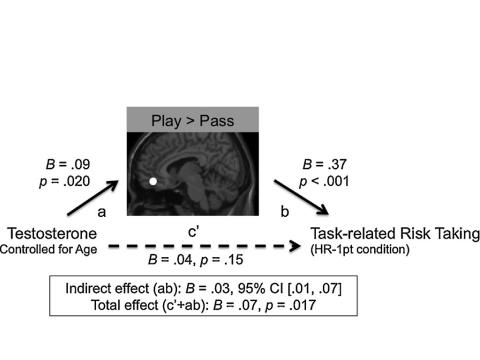
Risky decision-making in adolescent girls: The role of pubertal hormones and reward circuitry
Zdena Op de Macks, Silvia A. Bunge, Orly N. Bell, Linda Wilbrecht, Lance J. Kriegsfeld, Andrew S. Kayser, Ronald E. Dahl
Adolescence is a developmental period characterized by a greater tendency to take risks. While the adult literature has shown that sex steroids influence reward-related brain functioning and risk taking, research on the role of these hormones during puberty is limited. In this study, we examined the relation between pubertal hormones and adolescent risk taking using a probabilistic decision-making task. In this task, participants could choose on each trial to play or pass based on explicit information about the risk level and stakes involved in their decision. We administered this task to 58 11-to-13-year-old girls while functional MRI images were obtained to examine reward-related brain processes associated with their risky choices. Results showed that higher testosterone levels were associated with increased risk taking, which was mediated by increased medial orbitofrontal cortex activation. Furthermore, higher estradiol levels were associated with increased nucleus accumbens activation, which in turn related to decreased risk taking. These findings offer potential neuroendocrine mechanisms that can explain why some adolescent girls might engage in more risk taking compared to others. https://www.ncbi.nlm.nih.gov/pubmed/27591399


